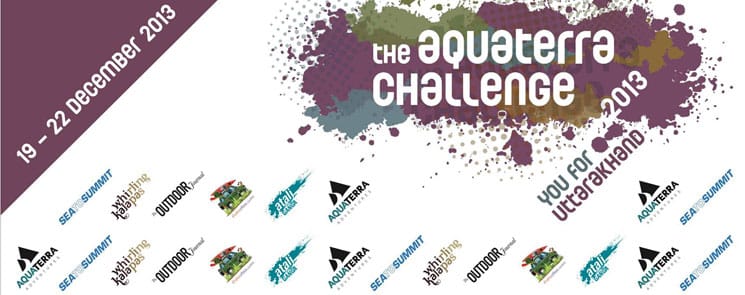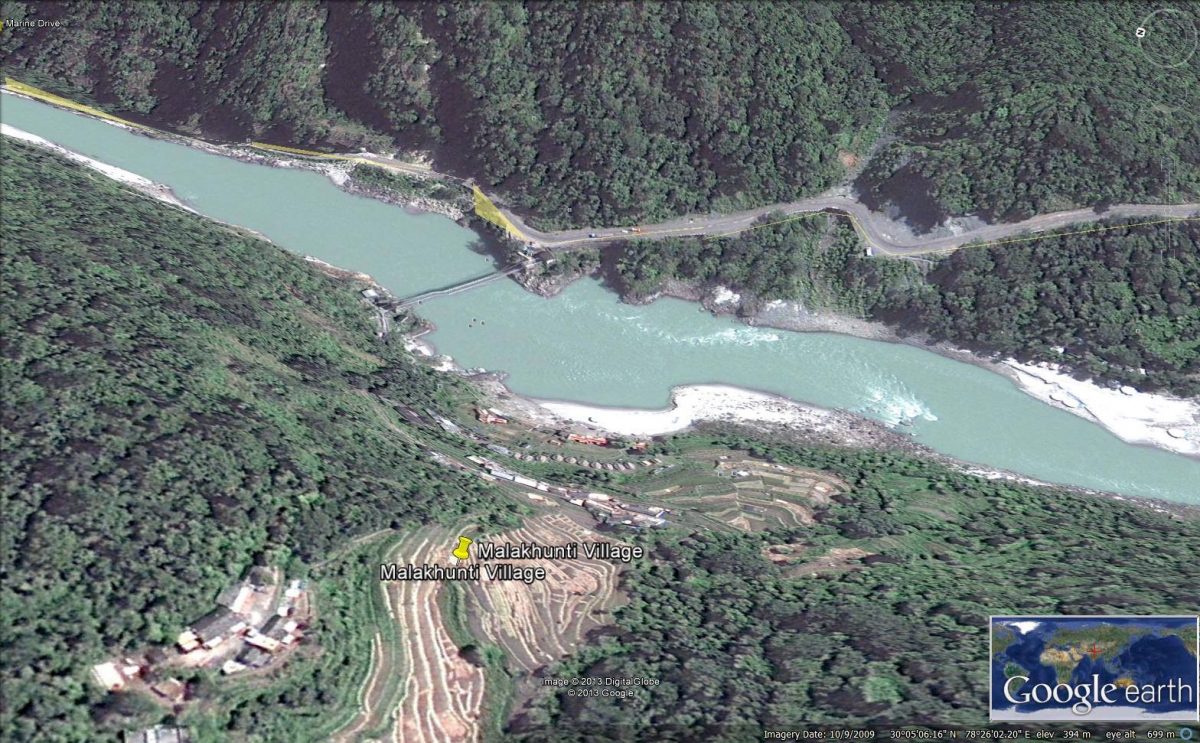How to prepare for the AquaTerra Challenge

This adventure racing event introduces the multi-day sport to North India with a 20k hike, 16k bike and 30k rafting section over 2 days in Uttarakhand. Join us as we cover every minute of the race!
Set in the upper Ganga valley of north India, the event is spread over 2 days (Dec 20-21), with a 20km walk, a 16km trail biking leg and a 30 km whitewater rafting segment down the Ganges. The AquaTerra Challenge is primarily organized from a social cause perspective remembering the June-2013 flood victims of Uttarakhand, the north Indian state where it's being held.
Participants can take part in individual and team categories, with each team having a maximum of 4 people.
To perform competitively in such endurance events, there are a couple of factors that one should be very particular about, like fitness, clothing, gear.
Fitness
Start off by walking long distances over uneven terrain. Try to walk at least 30 to 40 km per week, if you are intending to cover 20 km in one day during the event. Walk with your team so that you can figure out each others' pace and rhythm. It's important to build team coordination this way and helps you complete the walking leg together.
Try and cycle at least a minimum of 10 km everyday, it's great for your calf and hamstrings. It's very important to build up your stamina and physical endurance as you would want to cycle that leg in good time. It's always better to keep a slower average speed than trying to go really fast and tire yourself out. Remember, you still have a river stretch to complete!
While it's going to be much harder to practice for the rafting section if you live in a big city, you could go to the gym and train a little on the rowing machine, if you're game. A little bit of weights never hurt anyone - it'll just build your anaerobic strength, which is really useful over a multi-day event such as this.
Remember that this is a two day event, so build your endurance accordingly. You want to be as fit or fitter than your teammates so that you can help them if they are in trouble; and to maintain team spirit, level of humour, morale and mood!
Lastly, stay warmed up the start point. Stretch, warmup and stretch - as you will need to stretch yourself to win this!
Clothing
Ensure that you are wearing wicking, performance sports clothing only. Cotton is not recommended, because when you exert yourself, your body naturally sweats and produces moisture, no matter what the outside temperature. Cotton absorbs and retains moisture, cooling you down which may not be a great idea when you're walking a long day in the mountains. Moreover, sweat-wettened cotton will chafe your skin unbearably, create blisters on your skin and also flash cool you when you stop.
So start with a thin base layer made with polypro, polyester sports fabrics or merino wool. This is also great thermal underwear, which wicks away all moisture from your body and transports it to the surface of the fabric where it evaporates instantly.
You may want to wear a long sleeved dri-fit T shirt, comfortable walking trousers, and a fleece mid layer for the morning start. A very lightweight poncho in cars we get rain will be great protection as well. If you have a tendency to get a runny nose when you work out, carry a small handkerchief, your nose will run in the first two hours!
Carry a change of clothing in your overnight bag, with a fresh base layer, and a heavy fleece, it's much cooler by the river.
Don't forget to ensure that your socks are made from wicking material or sports fabrics. Wool is actually a great natural fibre that also wicks moisture instead of retaining it (which is also why, in cold countries, most people historically wore wool clothing - not cotton). Carrying an extra pair of socks helps to change mid way. Please make sure your footwear fits well (heels tight and toes wiggly), and that you've used them before to break them in! Wear your shoe-laces tight on the downhills. If your heel is not locked in, and your feet move inside the shoe, the chances of blistering and other injuries increase.
Gear and other essentials
Each team should have at least the following items :
- Flashlight /headlamp in case you're running way behind time; also needed at camp
- Personal sleeping bag
- A first aid kit (don't forget vaseline!)
- A whistle
- A platypus, Camelbak or similar hydration system
- Energy bars, gel or similar race food to eat en route
- Wind and waterproof outer layers; thermal underwear
- Race clothing to provide layers to keep you warm, including hat
- Watch

The race master Vaibhav Kala talks about the competition:
# How did you come up with an idea like the AquaTerra Challenge?
- There have been running and walking events in the country, but not a multi skilled race spread over 3 different legs. The idea came after the floods earlier this year, when the perception on travel to Uttarakhand took a real beating. People still think the state is inundated, and Rishikesh submerged. Hopefully, through positive projection of Uttarakhand through the AquaTerra Challenge, we will be able to show that travel is both fun, and safe for the state.
# How did you find/select the route?
- The route is selcted based on continuity, safety, and degree of difficulty, in that order. It takes place on the true left bank of the Upper Ganga, with near zero vehicular traffic, and sections that provide a continuous level of challenge that provide teams with a very equal chance of winning, being spread over 3 disciplines.
# Why these distances - 20k walk, 16k cycling, 30k rafting?
- Distances were chosen keeping in mind doability, nature of trail on Day 1 and combination of the biking-rafting legs on Day 2.
# Why aren't the Armed Forces and river pros allowed to participate, given that they have proper training/experience in such outdoor activities? Just curious!
- We didn't want any team to gain undue advantage on the river section, keeping the race open to whichever team imbibes the orientation best, and works together well.
# As the Race Master, what do you have to say to the participants prior to the event?
- Stay together, steadily and keep moving. Even if you lose time on Day 1, you have a great chance of making it up the next day.
| We caught up with one of the participants, Ranjan Pal from New Delhi, and this is what he had to tell The Outdoor Journal:# Do you find your age a hindrance for such events?- No, age is not a bar. I see it as a challenge for the mind, body and spirit. Besides, I consider myself quite young at heart. The right question to ask is NOT whether you can do it but whether you WANT to do it. And then you will always achieve your goal if the answer to the right question is YES!
# You've had a fair amount of experience of being in the Himalayas. How do you look at this trip? - It should not be difficult. The hill walk section of 20 kms should be quite manageable. My team and I completed the 100 km Trailwalker in 37 hours last year, so 7-8 hours of this walk shouldn't be a problem. I have the least familiarity with the trail bike ride of 16 kms but again it should be no major hurdle since we all know how to cycle. And I am most experienced in rafting so I am really looking forward to the final 30 kms of the raft trip where I will be leading the team. # How's your mental/physical preparation for this competition? Do you follow a routine? - I have stepped up my walking regimen to 3-4 days a week. And last weekend the four of us went for a trial walk in the Aravali Bio-diversity Park, . This is very much a team event so it is critical that we walk together and stay together at all times……………….no man left behind. |
TeamsPlace: New Delhi, India





Comments ()